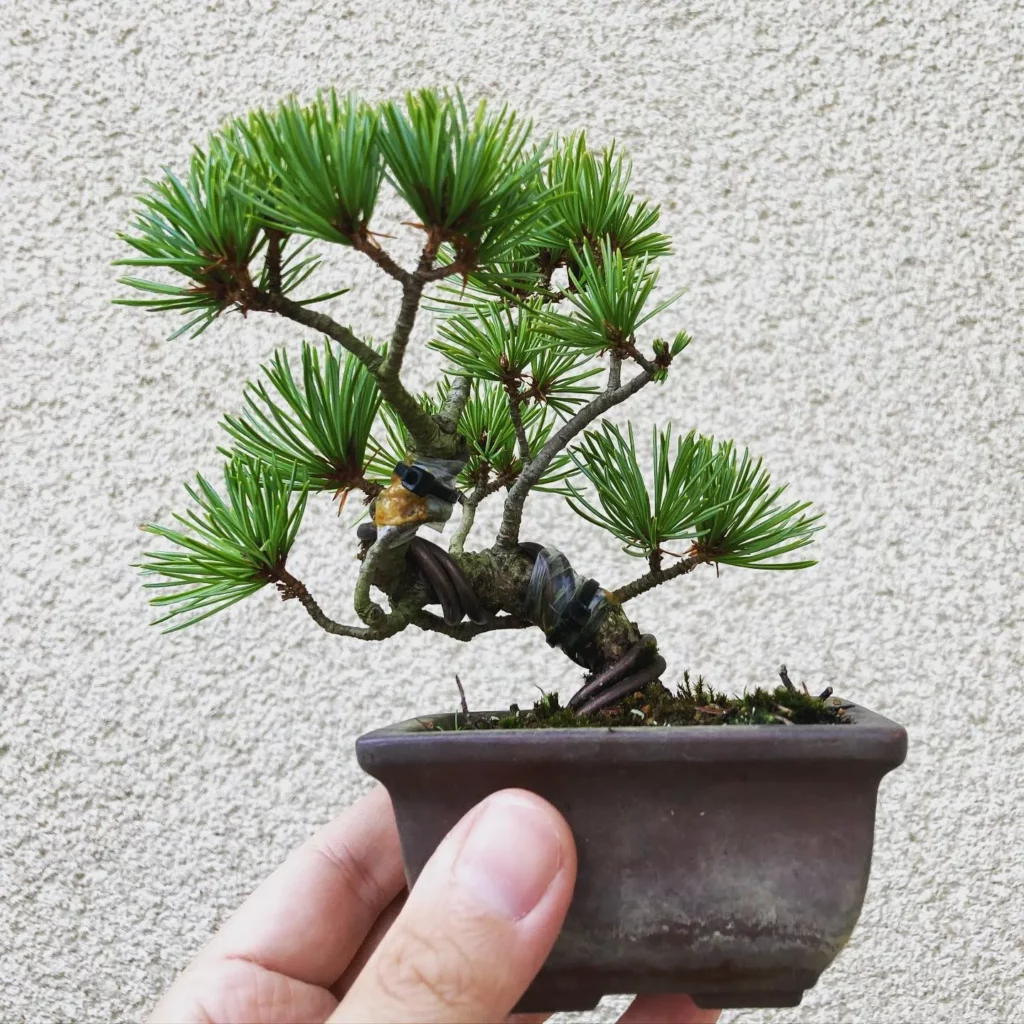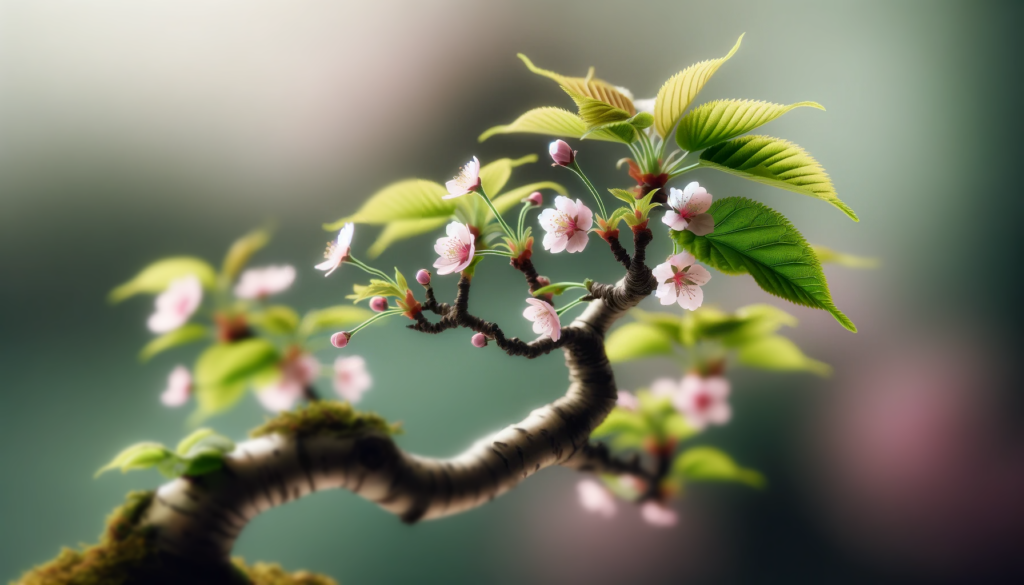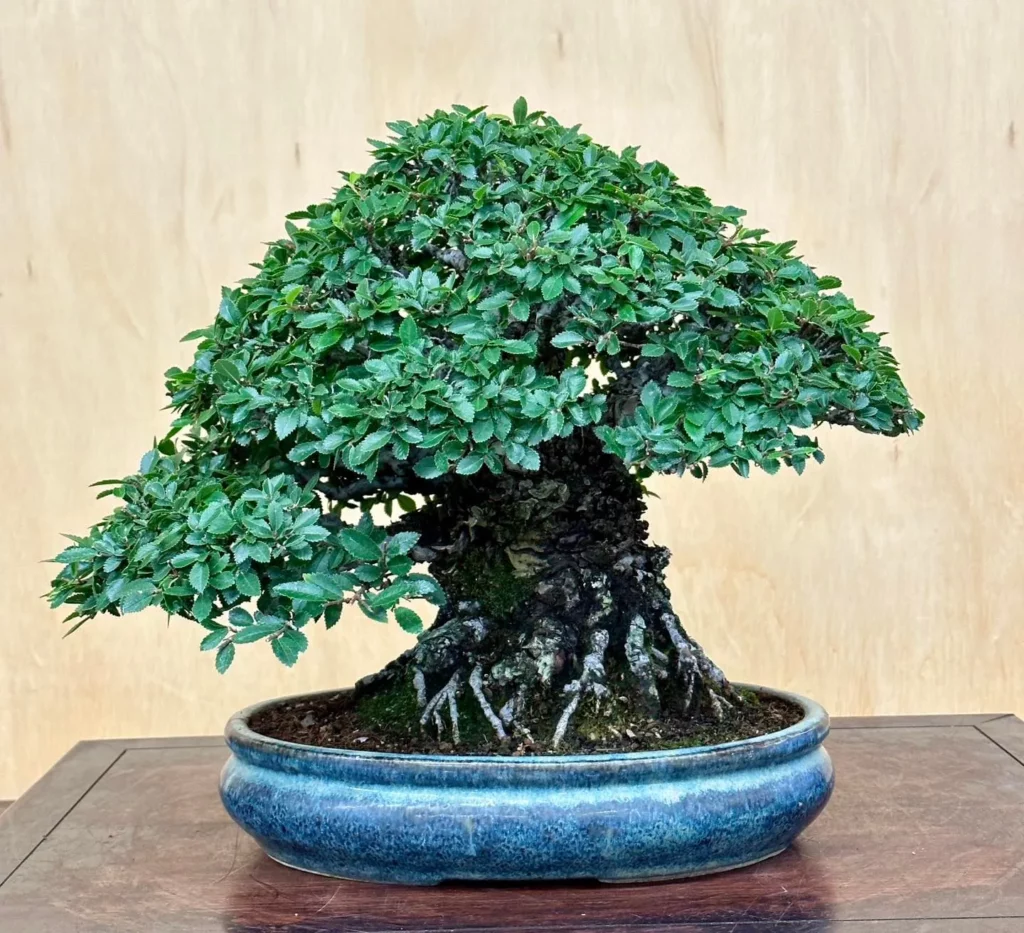Creating a bonsai tree from nursery stock or seeds involves selecting a suitable specimen, pruning, wiring for shape, and repotting in bonsai soil for gradual training into a miniature tree.
Key Takeaways:
- Obtain the stock for your bonsai tree from a garden center or local trees.
- Growing bonsai trees from seeds may require stratification or planting in the autumn.
- Inspect the roots and find the nebari to determine the front of the tree.
- Choose a bonsai style that suits your taste and the characteristics of your tree.
- Trunk reduction and shaping add movement and taper to the bonsai tree.
No products found.
Obtaining the Stock for Your Bonsai Tree
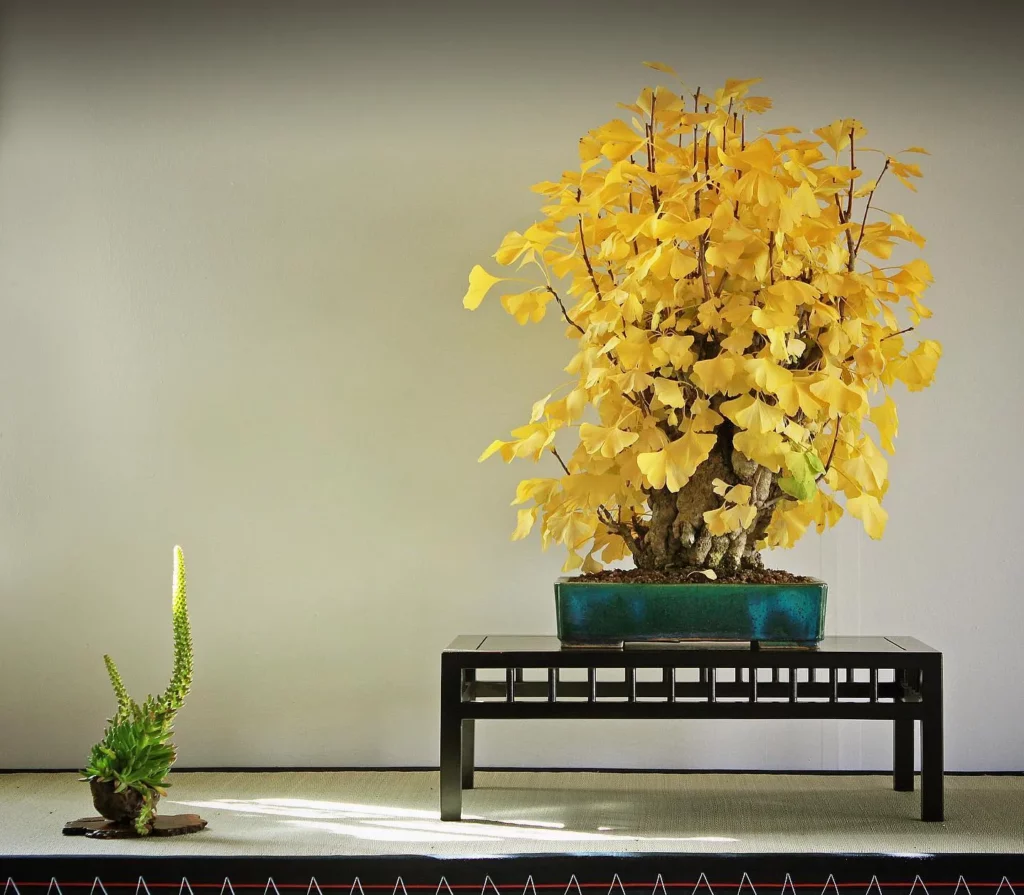

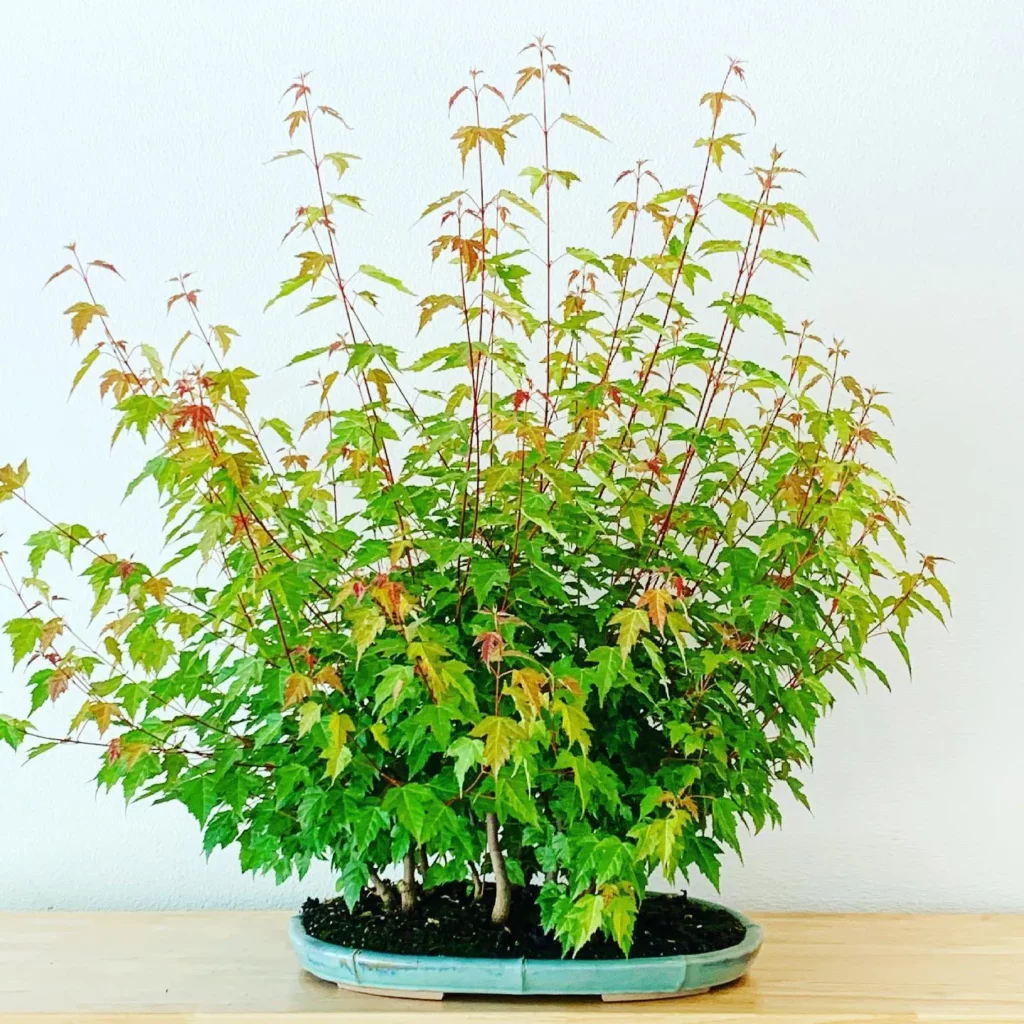
Before you can start creating your bonsai tree, you need to obtain the right stock, which can be purchased from a garden center or collected from trees in your local area. Whether you are a beginner or an experienced enthusiast, finding the perfect bonsai tree species is an essential step in your bonsai journey.
When purchasing from a garden center, look for healthy nursery stock that is suitable for bonsai cultivation. Consider the age, size, and overall condition of the tree. It is recommended to start with a younger tree as it will be easier to shape and train into the desired style.
Growing Bonsai Trees from Seeds

For those seeking a more hands-on approach, growing bonsai trees from seeds is an exciting way to start your bonsai journey. It allows you to have full control over the tree’s development and witness its transformation from a tiny seedling to a magnificent bonsai.
To ensure success, there are a few key techniques and maintenance practices to keep in mind.
- Understanding Stratification: Stratification is a process that simulates the cold period seeds would naturally experience, breaking their dormancy and increasing the germination rate. To stratify bonsai tree seeds, place them in a sealed plastic bag filled with moist peat moss or vermiculite and refrigerate them for a specific period based on the tree species.
- Planting in Autumn: Another option is to plant the seeds in autumn, aligning with nature’s schedule. This eliminates the need for stratification, as the seeds will naturally experience winter conditions. By mimicking the natural cycle, you increase the chances of successful germination.
Once the seeds have germinated and sprouted, it’s important to provide them with proper care and maintenance. Keep the soil consistently moist, but avoid overwatering, as this can lead to root rot. As the seedlings grow, gradually introduce them to more sunlight to encourage strong and healthy growth.
| Key Techniques | Maintenance Practices |
|---|---|
| Understanding stratification | Consistent soil moisture |
| Planting in autumn | Gradual introduction to sunlight |
Inspecting the Roots and Determining the Nebari



Before you begin styling your bonsai tree, it is essential to inspect the roots and find the nebari, as these will greatly influence the final design. The nebari is the base flare of the tree, and it plays a vital role in creating a visually appealing bonsai.
When inspecting the roots, carefully remove the tree from its container or loosen the soil around the base if it is growing in the ground. Gently untangle any tangled roots and examine their structure.
Look for roots that radiate outwards from the base of the tree, creating a natural-looking spread. The nebari should be visually pleasing and well-balanced.
While determining the nebari, it is important to consider the front of the tree. The nebari and the front of the tree may not always align perfectly, and sometimes adjustments need to be made to achieve a harmonious design.
Additionally, it is essential to keep in mind that the nebari can change over time as the bonsai develops and grows.
| Key Points | Considerations |
|---|---|
| Inspect the roots | – Look for root spread and structure – Untangle any tangled roots |
| Determine the nebari | – Look for a visually pleasing and balanced base flare – Consider adjustments for the front of the tree |
Quote:
“The nebari is the foundation of a beautiful bonsai. By carefully inspecting the roots and finding a well-balanced base flare, you set the stage for a stunning and harmonious design.” – John Bonsai, Bonsai Enthusiast
Choosing a Bonsai Style
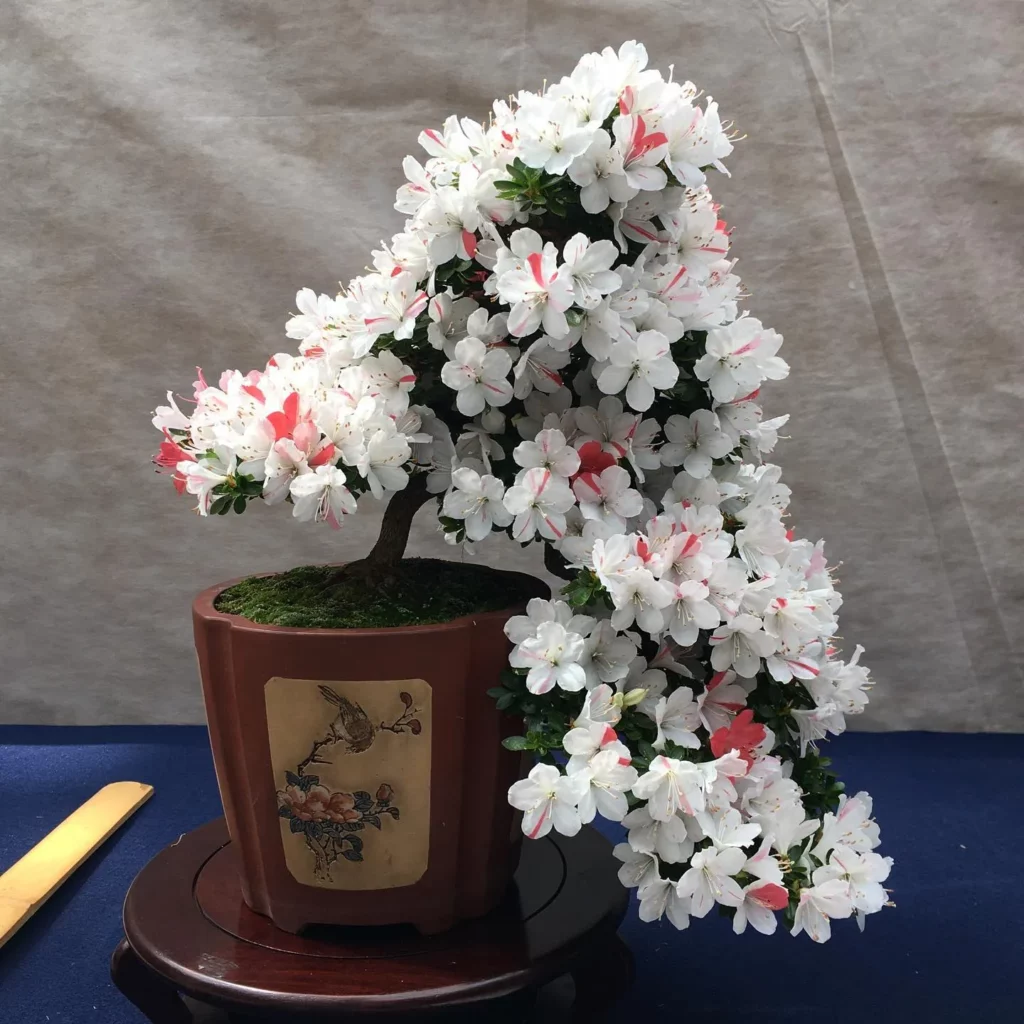
The style you choose for your bonsai tree plays a significant role in its overall aesthetic appeal, so take your time to consider various options. Each style offers a unique expression of nature’s beauty, allowing you to create a miniature tree that reflects your personal taste and vision.
One popular style is the informal upright, which features a slightly curved trunk that mimics the elegant lines of a mature tree. This style exudes a sense of grace and harmony, with branches that gradually decrease in size as they ascend towards the apex.
The informal upright style is ideal for showcasing the natural beauty and resilience of your bonsai tree.
Another option is the cascade style, which is characterized by a cascading trunk that flows downward, resembling a tree growing on the side of a cliff or a waterfall.
This style portrays a sense of movement and dynamism, making it a captivating choice for bonsai enthusiasts seeking a more dramatic and eye-catching display. The cascade style works particularly well with coniferous trees, adding a touch of wilderness to your collection.
| Style | Description |
|---|---|
| Informal Upright | A slightly curved trunk with ascending branches that gradually decrease in size. |
| Cascade | A cascading trunk that flows downward, resembling a tree growing on a cliff or a waterfall. |
| Slanting | A trunk that leans to one side, giving the impression of a tree buffeted by strong winds. |
| Formal Upright | A straight trunk with symmetrical branches, reflecting a mature tree standing tall and proud. |
Trunk Reduction and Shaping

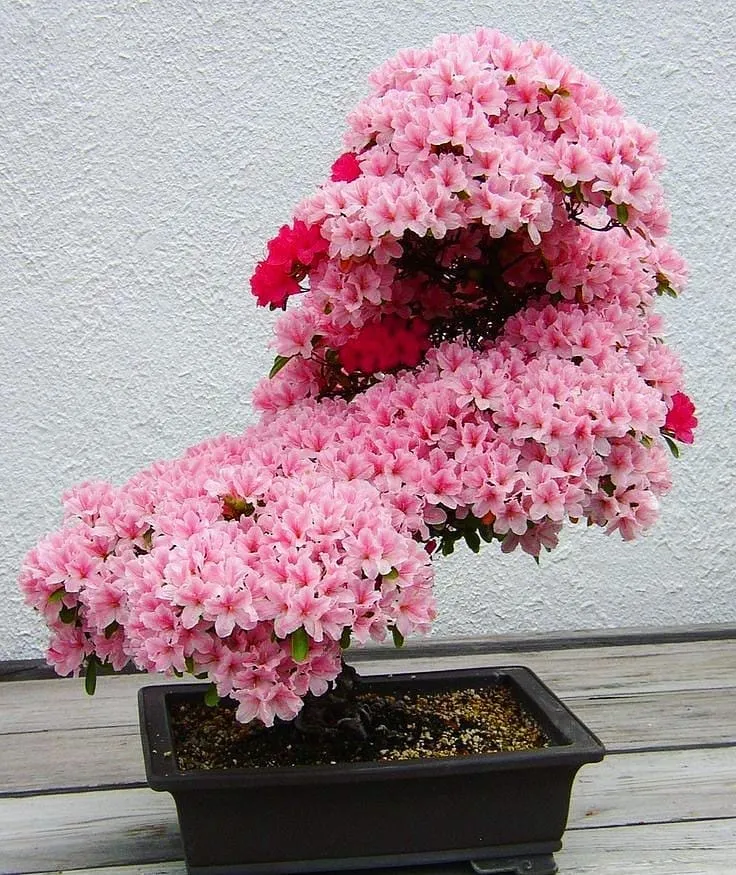
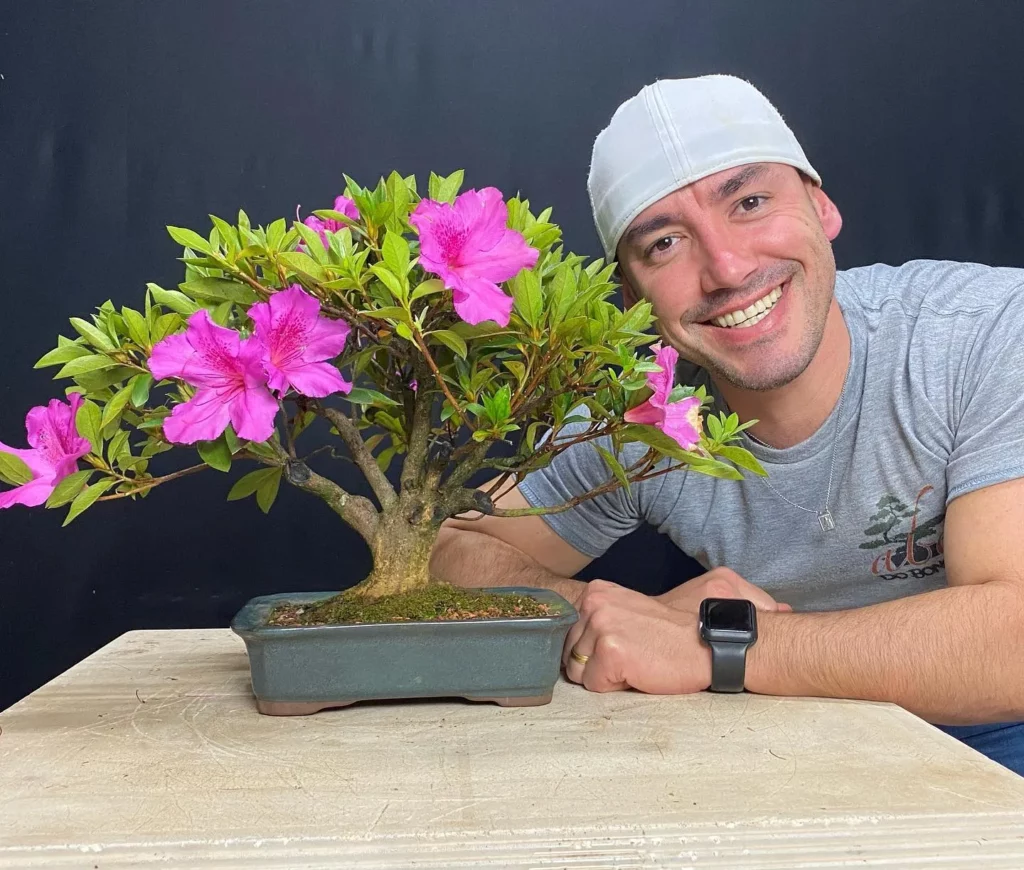
Trunk reduction and shaping are essential steps in creating a visually pleasing bonsai tree, as they give the trunk a sense of dynamic movement and natural taper. These techniques help in transforming an ordinary tree into a captivating work of art.
By carefully pruning and shaping the trunk, bonsai enthusiasts can create unique bonsai styles that reflect their personal taste and artistic vision.
To begin the process of trunk reduction, I carefully examine the tree’s trunk and branches, visualizing the desired shape and movement. Using precision tools, I selectively remove excess branches and foliage, allowing the remaining branches to take center stage.
This selective pruning not only enhances the overall design of the bonsai tree, but it also promotes healthy growth and encourages the development of fine twigs.
Shaping the trunk is equally important, as it adds depth and character to the bonsai tree. Utilizing various wiring techniques, I gently guide the trunk in the desired direction, creating gentle curves and bends that mimic the graceful lines found in nature.
By carefully bending and securing the trunk using aluminum wire, I am able to achieve the desired shape while ensuring the tree’s health and vitality.
Researching Specific Tree Species
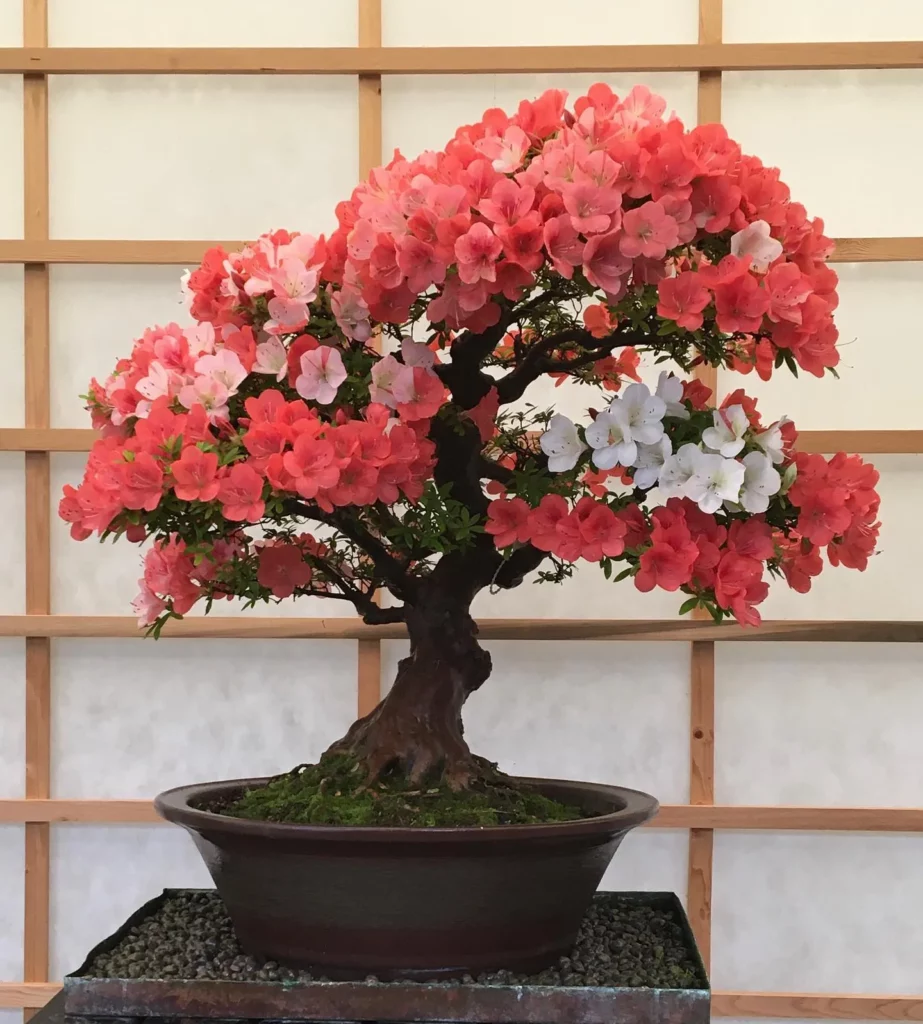
Each tree species has its own unique growth habits and requirements, so it is crucial to research and understand the specific needs of your chosen bonsai tree. By delving into the characteristics and preferences of different tree species, you can provide the best care and ensure the long-term health and development of your bonsai.
When researching specific tree species for bonsai cultivation, it is important to consider factors such as growth rate, light requirements, temperature tolerance, and overall size.
Some species are more suitable for beginners due to their adaptability and forgiving nature, while others require a more experienced hand. Understanding these characteristics will help guide your decision-making process.
Outlining the Tree’s Future
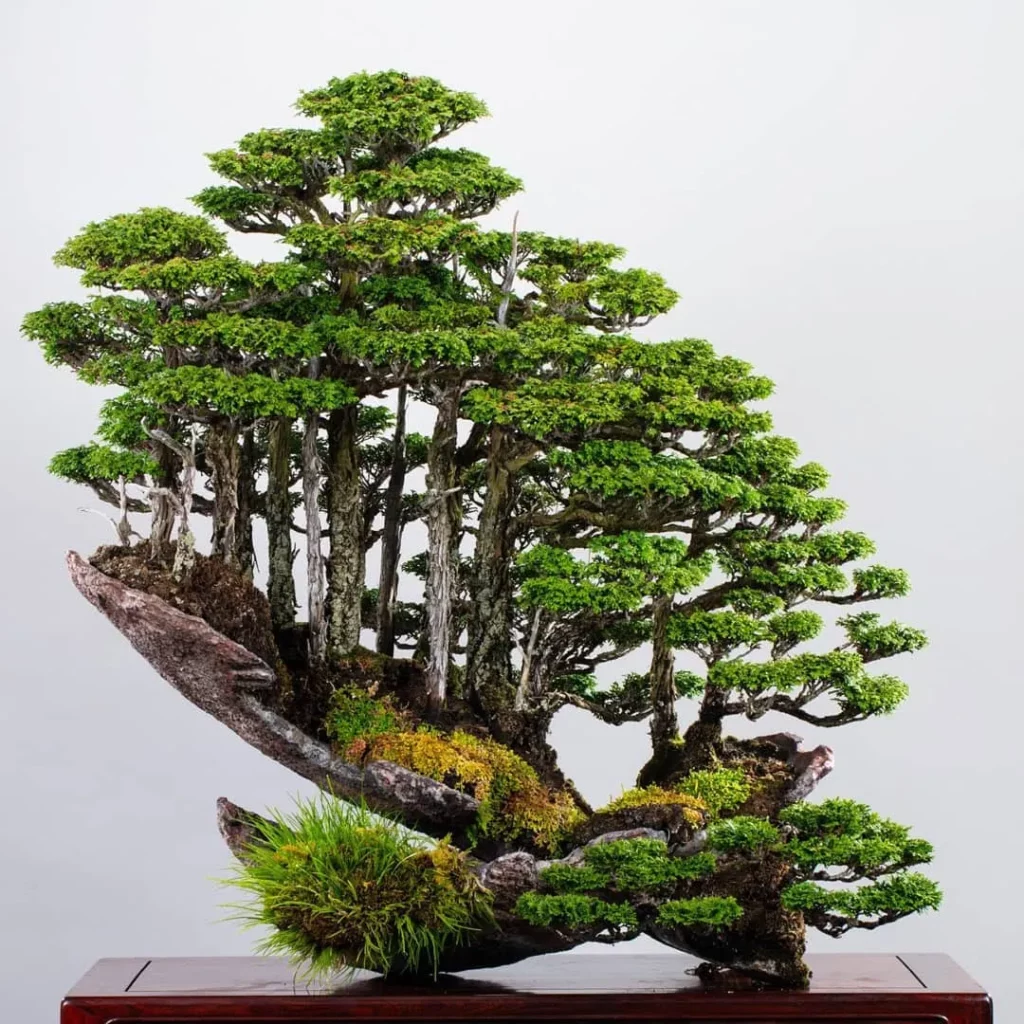
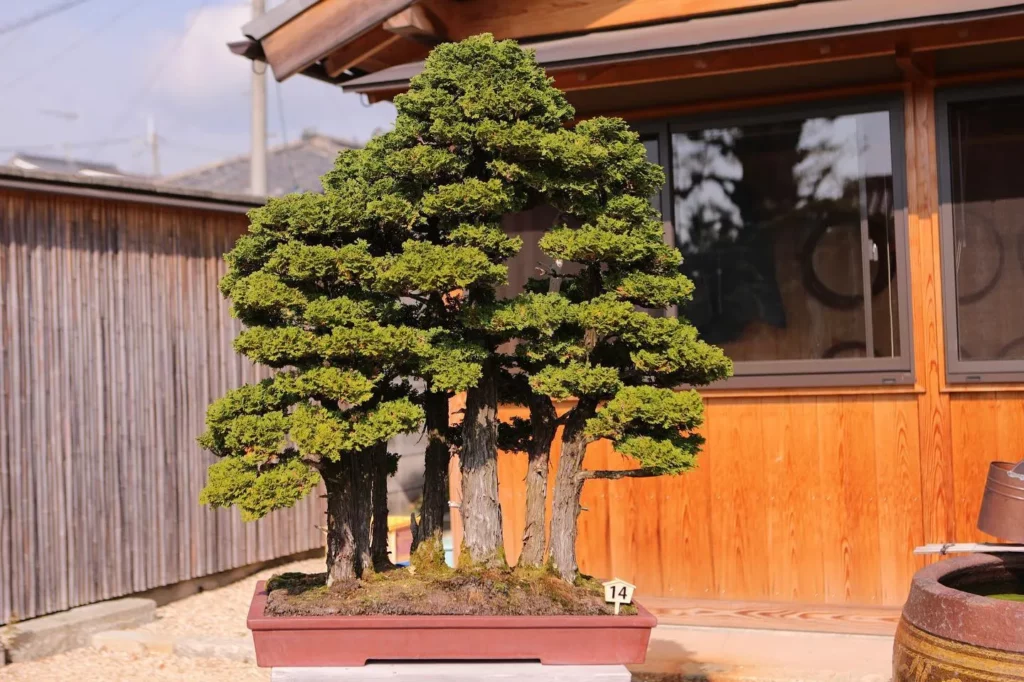
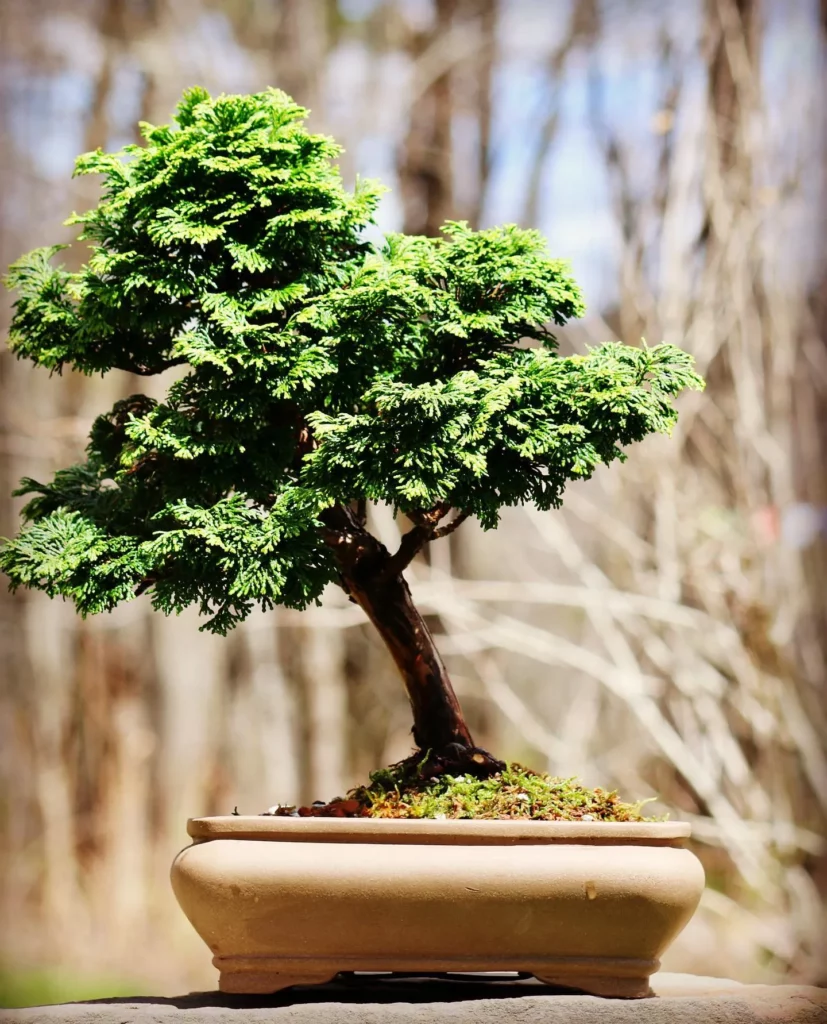
Before you start refining the details of your bonsai tree, it is essential to have a basic outline of its future form in mind. This involves envisioning the overall design, branch structure, and foliage arrangement that will contribute to the long-term development of your bonsai.
Having a clear vision will guide your decisions and techniques as you shape and care for your tree.
One way to outline the future of your bonsai tree is by selecting a specific bonsai style. There are various traditional styles to choose from, such as formal upright, informal upright, cascade, and windswept.
Each style has its own aesthetic and emphasizes different characteristics of the tree. Consider the natural shape and growth habits of your tree when selecting a style that complements its unique attributes.
To help you visualize the future form of your bonsai, you can create a basic sketch or use a bonsai design software. This will allow you to experiment with different branch placements, trunk angles, and pot choices.
Traditional Bonsai Styles
| Style | Description |
|---|---|
| Formal Upright | Straight trunk, symmetrical branches, and triangular silhouette. |
| Informal Upright | Natural-looking trunk with gentle curves and irregular branch placement. |
| Cascade | Trunk cascades downward, creating a waterfall-like effect. |
| Windswept | Trunk and branches appear to be shaped by strong winds, leaning in one direction. |
Returning the Tree to a Pot

Once you are satisfied with the design and development of your bonsai tree, it’s time to carefully return it to a suitable pot. The choice of pot is crucial as it not only complements the overall aesthetics of the tree but also provides the necessary environment for its growth and development.
Consider the size and style of the pot, ensuring it accommodates the root system and aligns with the chosen bonsai style.
When repotting your bonsai tree, it’s important to prepare the pot and the tree for the process. Gently remove the tree from its current pot, taking care not to damage the delicate roots. Inspect the roots for any signs of root rot or entanglement, and trim as necessary.
Use a bonsai soil mixture that provides adequate drainage and nutrients for the tree.
Position the tree in the pot, ensuring it is centered and at the desired angle. Carefully fill the pot with the bonsai soil mixture, making sure to fill in all the spaces between the roots while avoiding air pockets.
Gradually apply pressure to settle the soil and secure the tree in its new pot. Water the tree thoroughly, allowing the water to run through the soil and out of the drainage holes.
| Key Steps to Returning the Tree to a Pot |
|---|
| Choose a suitable pot that complements the tree’s aesthetics and provides the necessary environment for growth. |
| Gently remove the tree from its current pot, inspect the roots, and trim as necessary. |
| Prepare the pot and the tree for repotting, ensuring proper drainage and using a bonsai soil mixture. |
| Center the tree in the pot, fill with soil, and secure the tree by settling the soil and watering thoroughly. |
Continuous Care for Your Bonsai Tree



Proper care and maintenance are vital to ensure the well-being and longevity of your bonsai tree. By following a few essential steps, you can create an environment that promotes healthy growth and showcases the beauty of your miniature masterpiece.
Soil moisture: One of the most critical aspects of bonsai tree care is monitoring soil moisture. Bonsai trees are typically potted in special bonsai soil that allows for proper drainage. It is important to avoid over-watering, as this can lead to root rot.
On the other hand, under-watering can cause stress and damage to the tree. A good practice is to check the moisture level by inserting your finger into the soil up to the second knuckle.
If it feels dry, it is time to water your bonsai. Remember to water thoroughly and allow excess water to drain out.
Fertilizing: Regular fertilization is essential to provide your bonsai tree with the nutrients it needs for healthy growth. Bonsai-specific fertilizers are available and can be applied according to the instructions on the product.
Generally, bonsai trees should be fertilized every two weeks during the growing season and less frequently during the dormant period. Be sure to follow the guidelines for the specific species of your bonsai tree.
| Bonsai Tree Care Tips: | Bonsai Tree Maintenance: |
|---|---|
| Monitor soil moisture levels | Regularly prune and shape your bonsai tree to maintain its desired appearance |
| Water thoroughly, but avoid over-watering | Keep an eye out for pests and diseases, and take appropriate action if necessary |
| Fertilize consistently during the growing season | Protect your bonsai tree from extreme weather conditions |
| Use bonsai-specific fertilizers | Repot your bonsai tree every 1-2 years to refresh the soil and promote healthy root growth |
Tools and soil: To properly care for your bonsai tree, you will need a few essential tools. These may include bonsai shears for pruning, wire for shaping, and bonsai soil for repotting.
Using the right tools will allow you to perform tasks with precision and minimize any potential damage to the tree. Additionally, repotting your bonsai tree every 1 to 2 years will help refresh the soil and promote healthy root growth, ultimately contributing to the overall health and vitality of your tree.
Conclusion
Creating and nurturing bonsai trees is a wonderful journey that brings joy, patience, and a deep appreciation of nature’s beauty. Whether starting with nursery stock or seeds, the process of creating a bonsai tree involves several important steps.
Obtaining the stock is the initial step, which can be done by purchasing from a garden center or collecting from local trees. By growing a bonsai from seeds, one can experience the rewarding journey from the very beginning.
Stratification, or simulating a cold period, may be necessary to increase the germination rate. However, autumn planting eliminates the need for stratification, aligning with nature’s schedule.
Inspecting the roots and finding the nebari, or base flare, is a critical step that helps determine the front of the tree and its overall appearance. This can change over time as the bonsai develops.
Choosing a bonsai style, such as informal upright or cascade, is also crucial in creating a visually appealing tree that reflects personal taste.
The process of creating a bonsai involves trunk reduction and shaping. Cutting and shaping the trunk adds movement and taper, enhancing the overall aesthetic of the tree.
Researching the specific tree species is essential to understand their growth habits and adapt techniques accordingly, ensuring the bonsai’s long-term health and development.
Creating a basic outline for the tree’s future and returning it to a pot are the final steps in the creation process.
Proper care, including monitoring soil moisture, providing fertilizer, and using the right tools and soil, is essential for the bonsai’s continuous growth and well-being.
Embarking on the journey of creating and caring for a bonsai tree is not just about creating a miniature tree. It is a journey of patience, craftsmanship, and a deep connection with nature.
The process of shaping and nurturing a bonsai brings a sense of fulfillment and appreciation for the beauty that can be found in every detail.
FAQ
Q: What is the first step in creating a bonsai tree from nursery stock or seeds?
A: The first step is to obtain the stock, which can be purchased from a garden center or collected from trees in the local area.
Q: Do I need to do anything special to grow a bonsai tree from seeds?
A: Yes, stratification may be necessary to simulate a cold period and increase the germination rate. However, planting the seeds in the autumn aligns with nature’s schedule and eliminates the need for stratification.
Q: How do I determine the front of the bonsai tree?
A: By inspecting the roots and finding the nebari, or flare at the base of the tree. Exposing the nebari helps determine the front, although it may change over time as the tree develops.
Q: What is the importance of choosing a bonsai style?
A: Choosing a bonsai style, such as an informal upright, is important as it helps guide the shaping and overall appearance of the tree.
Q: What is trunk reduction in bonsai tree creation?
A: Trunk reduction involves cutting and shaping the trunk to add movement and taper, creating a more dynamic and visually appealing bonsai tree.
Q: Why is it important to research specific tree species when creating a bonsai tree?
A: Researching specific tree species helps you understand their growth habits and allows you to respond accordingly, ensuring the health and development of the bonsai tree.
Q: What should I consider when outlining the future of my bonsai tree?
A: When outlining the future of your bonsai tree, consider factors such as branch structure, foliage, and overall design. These decisions will contribute to the long-term development and aesthetic appeal of the bonsai.
Q: How do I care for my bonsai tree after styling?
A: After styling, it is important to return the tree to a pot, selecting the appropriate pot and securing the tree for stability. Additionally, continuous care such as monitoring soil moisture, providing fertilizer, and using the right tools and soil are essential for its health and development.



